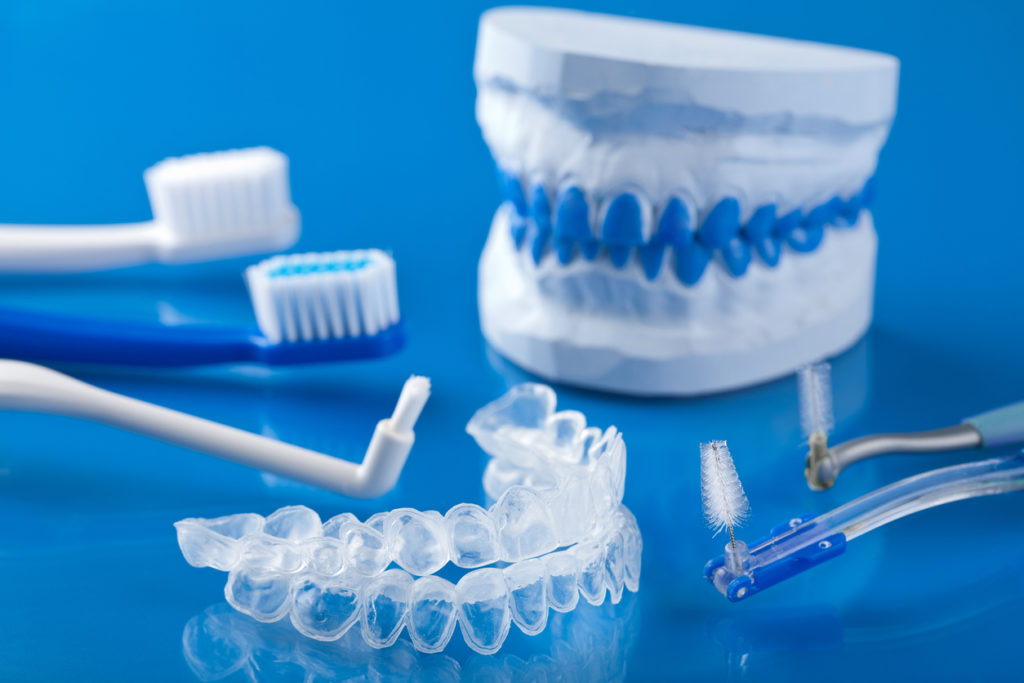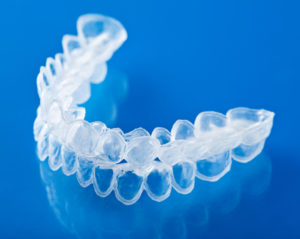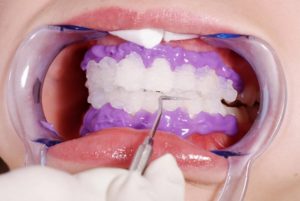Roughly 32% of people say that they’re very concerned about the look of their teeth. One out of every five people even go as far as concealing their teeth in photos. Based on this, it’s no wonder teeth whitening is so popular in so many countries around the world.
When it comes to your teeth whitening options, you have two main choices available to you: you can choose to do it yourself at home (DIY), or you can head to a dentist to have things done in a professional manner.
Which of these two techniques is more effective? Is one legitimately better than the other?
Read on to find out.
Your At-Home Teeth Whitening Options
If for some reason you’d rather not go to dental appointments but still want those professional teeth whitening results, you still have a wide range of options available to you.
DIY teeth whitening is convenient. You can do them on your own time, on your own terms. The downside of this, however, is that they’re only effective to a certain point. It’s hard to get the exact same results you’d get in a professional setting without actually sitting down with a dentist to get the work done.
In this article, we will explore three DIY teeth whitening options: teeth whitening trays, teeth whitening strips, and whitening toothpastes and rinses.
Teeth Whitening Trays
Trays contain a unique solution or other form of liquid that, when regularly applied, will whiten your teeth between five and eight shades over time. The process itself varies depending on which brand you plan on using.
But generally speaking, people have the most success with durations of between one to three hours per night, for one to three times per week. The more frequently you use the trays, the whiter your teeth will get as a result.
This is by far the most effective at-home teeth whitening option you have. The downside here is the cost. These kits can range from $50 to several hundred dollars or more, depending on how many you need, how often you plan on using them, and other factors that will be unique to your situation.
Get on top of your dental health
Find and instantly book affordable dentists within Australia
Teeth Whitening Strips
Teeth whitening strips are clear strips coated with a whitening solution that you apply to your teeth once or twice a day for between a half hour and two full hours (depending on the brand you’ve selected).
The major advantage that this has over teeth whitening trays is cost — you can get a full set of strips for as little as $40. They’re not nearly as effective, however, and will probably only whiten your teeth by between two and four shades. Results will also be less consistent around the crevices of your teeth and in other areas where establishing long-term contact with the strip is difficult.
Whitening Toothpastes and Rinses
Finally, we have whitening toothpastes and rinses — a very popular option for many people around the world. They’re far more convenient than other options. Instead of using a regular toothpaste or mouthwash, you simply switch to one made to whiten your teeth.
They cost far less than any other at-home option. Quality whitening toothpaste can be purchased for as little as $10 in many locations, but they’re also far less effective. Your teeth will be about two shades lighter, but they may be hard to notice at a casual glance.
Because of this, whitening toothpastes and rinses are really best used as a supplement to another one of these techniques — not necessarily as a replacement.
The Professional Teeth Whitening Methods
On the other hand, we have a more professional approach, which will require you to make an appointment to see a dentist.
This is more expensive than an at-home method, and it’s decidedly less convenient, but it will also be very difficult to get these types of results on your own.
There are two options you can choose from: dental bleaching and the halogen light.
Dental Bleaching
Source: Adobe Stock
Dental bleaching is one of the most common professional teeth whitening methods in existence, and with good reason: results are as immediate as they are obvious. In a best-case scenario, you can expect your teeth to get about eight shades whiter.
A dentist will take steps to protect your gums before applying a whitening agent to the surface of your teeth. The total number of visits you make will depend on the result you want to achieve.
The major disadvantage of this method is cost and time. Visits are far longer than other methods, and depending on the dental professional that you’re working with, you can expect to pay as much as $1,000.
The Halogen Light
Some dental providers also give patients the option of performing dental bleaching with the added element of a halogen light.
The process is very similar to that which was outlined above, but the halogen light actually accelerates the whitening agent — allowing for better, faster results.
Instead of making multiple visits, you’ll get your teeth those same eight shades whiter in just a single trip. You’re definitely going to have to pay for it — some providers charge as much as $3,000 for that one hour of your time.
Now that you’ve explored the different teeth whitening options available for you, it’s time to make a choice.
At-Home vs Professional Whitening: Which Is Effective?
To review, the major advantages and disadvantages of these two distinctly different types of methods are as follows:
| At-Home Whitening | Professional Whitening | ||
|---|---|---|---|
| One to three hours per night for the teeth whitening trays | For dental bleaching, it takes a number of visits to the dentist | ||
| Duration | Once or twice a day for the teeth whitening strips | With the halogen light, it only takes one session at the dentist’s office | |
| With whitening toothpaste, use it every time you brush your teeth | |||
| What to expect | Can make your teeth 2x to 8x whiter | Can make your teeth up to 8x whiter | |
| Price | From $10 to $100 | From $1,000 to $3,000 | |
In the end, it’s important to remember that there is not necessarily a “one size fits all” approach to teeth whitening. Some people enjoy the convenience and cost-effectiveness of at-home treatment, while others need immediate results and have the funds to pay for it in a professional environment.
Deciding on the best option for your situation is something that only you can do. Only by weighing the pros and cons very carefully will you be able to make that determination moving forward.
Interesting Facts About Cosmetic Dentistry
[sc_fs_multi_faq headline-0=”h2″ question-0=”How many people suffer from issues related to cosmetic or aesthetic dental problems?” answer-0=”9 out of 10 have experienced embarrassment due to their teeth, contributing to poor self image, reducing their social interactions and limiting employment prospects” image-0=”” headline-1=”h2″ question-1=”Can the lack of teeth cleaning and regular check ups lead to bigger problems in Australia?” answer-1=”Common dental diseases cause extensive tissue infection, resulting in an estimated 32,000 preventable hospitalisations per year. This can be prevented through regular dental hygiene!” image-1=”” headline-2=”h2″ question-2=”How much does teeth whitening cost in Australia?” answer-2=”With a qualified dentist, using a concentrated whitening agent: costs can vary from $500 up to $1500. This depends on your suburb, the teeth whitening system you choose and the condition of your teeth” image-2=”” count=”3″ html=”true” css_class=””]
HealthEngine: Making a Dental Appointment Has Never Been Easier
But above all else, you shouldn’t be afraid to make an appointment to have your teeth checked by a dental professional.
Don’t let factors like price scare you away. Oftentimes, rates are far more reasonable than you think. Moreover, when you consider that you’re talking about something as important as your long-term oral health, this is one of those situations where you truly don’t want to leave anything to chance.
If you want to book your next dental appointment, don’t delay — find dental appointments with affordable practitioners near you.
All content and media on the HealthEngine Blog is created and published online for informational purposes only. It is not intended to be a substitute for professional medical advice and should not be relied on as health or personal advice. Always seek the guidance of your doctor or other qualified health professional with any questions you may have regarding your health or a medical condition. Never disregard the advice of a medical professional, or delay in seeking it because of something you have read on this Website. If you think you may have a medical emergency, call your doctor, go to the nearest hospital emergency department, or call the emergency services immediately.











